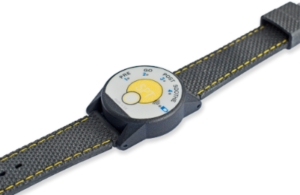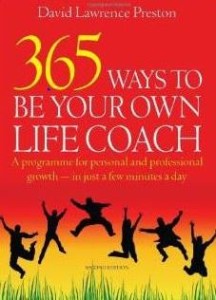Oscar Wilde once said that whenever he felt the urge to exercise he would lie down and rest until it went away. Shame! This is a certain recipe for physical ill health, stress and mental deterioration. However, the amount and type of exercise needed to stay healthy are well within the grasp of most people.
One of the most disturbing aspects of modern life is how little physical activity many of us undertake. In Britain, eight out of ten adults are so physically inactive they are damaging their health, and the numbers are rising. Three-quarters of young Britons have less than two hours’ physical education per week at school, and almost a quarter of 12-15 year-old wheeze after a brief jog. And it’s getting worse. Research in 2015 – three years after the London Olympics that were supposed to help raise participation rates in the UK – nearly half a million fewer people were participating in physical activity. The biggest culprits were distractions such as TV and computers.
The benefits of regular exercise are too numerous to list. They include more energy and stamina, increased resistance to disease, lower cholesterol levels, deeper, more satisfying sleep, and a more youthful appearance. Exercise also brings mental benefits such as increased self-confidence, better concentration, improved memory and greater resilience to stress. It is also vital for weight control. The metabolic rate is raised both during exercise and for hours afterwards, burning off fat and excess calories.
As little as thirty minutes rapid walking four times a week can provide up to ten years of rejuvenation, making the heart more efficient, reducing the risk of coronary heart disease and significantly increasing life expectancy. Indeed, sixty year-old men who have exercised regularly throughout their lives have reaction times equal to, or better than, inactive men in their twenties and women who exercise have lower rates of breast and reproductive-system cancers.
Exercise is also a natural tranquilliser and antidepressant. It helps releases the stress chemicals which flood the body when we are stressed. We’re also happier when we exercise because the ‘happy hormones’ known as endorphins are released into the bloodstream bringing feelings of elation which can still be felt long after. Endorphins also block feelings of pain and help manage stress and depression.
What Kind of Exercise Do You Need?
Twenty to thirty minutes a day sufficient to raise the rate of breathing is adequate for most adults to maintain good health. Make discreet adjustment to your lifestyle. For instance, walk or cycle instead of using motorized transport and use the stairs instead of the lift. Buy a push mower – gardening is excellent aerobic exercise.
You need:
- Endurance exercises to build stamina, improve breathing and condition the cardiovascular system.
- Flexibility or stretching exercise to loosen the muscles, build suppleness and prevent stiffness; aches and pains in the joints as we get older are not so much the result of aging or arthritis, but lack of use.
- And you need strengthening exercises to increase or maintain muscle power.
Aerobic and Anaerobic Exercise
Aerobic increases the oxygen supply in the bloodstream (aerobic means ‘in combination with oxygen’). It increases lung capacity, burns fat and builds stamina. It includes anything that can be done at a steady rate without becoming breathless: walking, cycling, swimming, jogging, dancing, etc.
Aerobic exercise also helps burn off excess adrenalin and the harmful toxins that result from stress and tension. We can’t always respond to frustration and stressful situations with instant fight or flight, but we can work it off walking, jogging, cycling or swimming.
In contrast, anaerobic exercise burns starch and builds strength. ‘Anaerobic’ means ‘in the absence of oxygen’. Any activity which leaves you breathless is anaerobic. It involves short, intense bursts of energy which impose a much greater strain on the body.
If you’ve been physically inactive, start with gentle aerobic exercise and increase your work rate gradually. Make sure you can do it without discomfort before attempting strenuous anaerobic exercise.
Stretching and loosening
Stretching and loosening builds suppleness, prevents stiffness, relieves muscle tension and reduces the risk of injury. Create a regular routine of stretching and moving the joints and muscles is recommended. One excellent way is yoga. Anyone who does yoga regularly will be supple well into their later years.
Hints on exercise
Within a few days of beginning a sensible exercise programme, anyone who hasn’t taken regular exercise will find they’re looking and feeling better than they’ve done for years.
- If you are over forty, have a medical check up before you start exercising, especially if you haven’t exercised regularly for a while.
- Don’t try to do too much to begin with. Stay within your limits and increase your work rate gradually.
- Always warm up first. A few minutes of gentle loosening and stretching protects the heart, muscles and joints from injury.
- Exercise at least three times a week at a time to suit you. Choose activities you enjoy.
- Never miss a session (unless you’re ill). It’s easier to get out of shape than into it. It takes several months to reach peak condition, but your fitness can be lost in two or three weeks of inactivity.
- Cool down afterwards, e.g. a few minutes of gentle loosening and stretching.
- Don’t overdo it. You should feel better five minutes after completing exercise than you did before. If you feel breathless, slow down until your body is safely used to it.
- Don’t exercise too hard if you are ill. Your body needs the energy for recovery.
- Allow yourself plenty of recuperation time between sessions. Your body will recover more quickly and you will be less likely to get injured.
- Smile! Nothing else benefits the facial muscles as much.
Weight Control
An obese man was given a list of permitted foods by his doctor. ‘Fine,’ he said having read the first few items – lettuce, carrots, celery, etc – ‘but do I take them before or after meals?’
Unless you have a medical condition which interferes with metabolism, there are only two ways to lose weight – eat less and exercise more.
If you are overweight, first get yourself checked out by a doctor. Then, if there is nothing medically wrong, avoid eating and drinking between meals (no nibbling and snacking), eat smaller portions (you’ll soon find that a smaller amount of food makes you feel satisfied and comfortably full) and choose only health giving, low sugar, high fibre, low fat foods and drinks, which are consistent with a slim figure.
Reinforce your weight control programme by using the I-T-I-A Formula:
- Clarify your intention by setting firm, challenging but realistic goals. Set deadlines by which you intend to achieve your milestones.
- Changing your thinking and beliefs about weight (e.g. reinforce the idea that if you eat less and exercise more, you will lose weight – no excuses!). Affirm that things are already changing and you will succeed.
- Mentally ‘imagine’ yourself having reached your target weight.
- Take action, monitor your progress, make adjustments if necessary, and persist until you succeed.
The types and amounts of exercise needed to reap the rewards are well within the reach of most people, even those who have not previously exercised regularly. Go for it!
©Feelinggoodallthetime, 27.6.2017
Nothing herein is intended as a substitute for medical advice. Always consult a doctor or qualified health care professional about any condition that may require diagnosis or treatment.
Follow us on Facebook and Twitter @Feelinggoodatt
The AcuPearl Sport is designed to support the body during exercise. Further details – www.AcuPearl.co.uk.
How to Books, 2010





